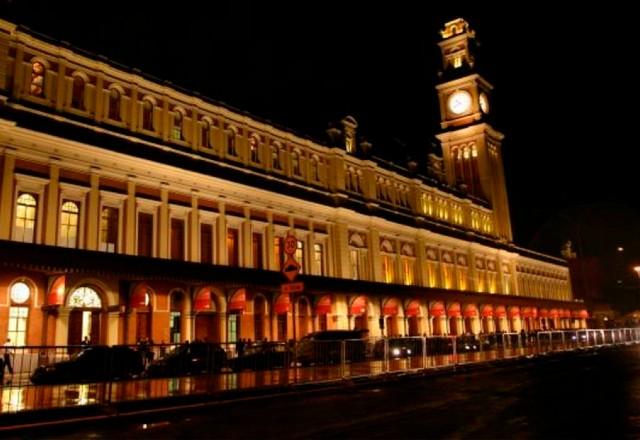RIO DE JANEIRO, BRAZIL – After being destroyed by a fire in December 2015, the Museu da Língua Portuguesa {Museum of the Portuguese Language) will reopen in grand style on July 31 after a five-year closure. Rebuilt after the fire that destroyed it in 2015, the museum brings interactive experiences and immersive environments back to São Paulo.

The exhibition “Língua Solta” (Language Unloosed), with which the museum returns to the cultural tour of São Paulo, shows the Portuguese language in its wide and varied development in art and daily life through a series of artifacts that anchor their meanings in the use of words.
In total, there are 180 pieces, such as objects from folk art and contemporary art, presented in a varied way and on display on the second floor of the museum until October 31. Right at the beginning, at one of the entrances to the room, “Eu preciso de palavras escritas”, a coat embroidered by Arthur Bispo do Rosário, is exhibited. At the other end are four rural folk dance “maracatu” banners brought from Pernambuco for the show.
Behind the banners, a wall shows a projection of memes by the Saquinho de Lixo collective, and on the opposite wall, the mural “Zé Carioca e amigos (Como almoçar de graça)” [Joe Carioca and friends (how to lunch free)] by Rivane Neuenschwander invites the audience to write and draw with chalk whatever comes to mind at that moment, on a wall that has been transformed into a base for comic strips.
Thus, in the first meters of the path, the visitor comes into contact with the mixture proposed by curators Fabiana Moraes and Moacir dos Anjos, which sets the tone of the entire exhibition, linking art with politics, life in society, everyday practices and forms of protest, religion and survival – always infused with the Portuguese language.
Street posters, “cordel” leaflets, toys, wall coverings and cachaça labels are mixed throughout the space with the works of Mira Schendel, Leonilson, Rosângela Rennó, Jac Leirner, Emmanuel Nassar, Elida Tessler and Jonathas de Andrade and other contemporary artists.
“Language is loose because it disrupts the consensuses that anchor the prevailing relations of sociability, both in private and public life. Embodied in images and diverse objects, it suggests other possible understandings of the world, and thus weaves a politics that is its own,” says Moacir dos Anjos. The project starts from language as a social operator that not only reflects but also reorganizes ways of life.
In an intuitive and playful way, the exhibition hosts some of the creative strategies that suggest and unfold the emancipatory power of language through the structuring of a wide variety of images and objects. “We understand that language is a space of power struggle and is reflected in different issues in Brazil – from race, class, gender and geographies,” says Fabiana Moraes.
The curators highlight the work of Maria de Lourdes from the rural folklore center of Caruaru, state of Pernambuco; she is an evangelical who sells handmade books typed by herself for less than R$1.00. Maria walks the streets of the city with a sign bearing her name and her self-declared profession as a writer, unimpressed by the cultural and market structures that normally sanction who can and cannot call themselves writers – in an involuntary form of quasi-protest.
“Língua Solta” was pre-released in early May, during the International Week of the Portuguese Language. From the 4th to the 7th of that month, a total of 160 people saw the exhibition firsthand, with tickets issued in advance via the Internet. Between May and June, the exhibition was visited by schools and social institutions in the area surrounding the museum, by appointment.
Reconstruction
The Museum of the Portuguese Language, located in the historic Luz Station, was one of the first museums in the world dedicated exclusively to a language. It promotes immersion in the history and diversity of the language through interactive experiences, audiovisual content and immersive environments.
In its renewed permanent exhibition, which occupies the second and third floors of the building, the museum presents new experiences such as “Falares,” which presents the different accents and expressions of Brazil, and “Nós da Língua Portuguesa,” which focuses on the cultural diversity of the Community of Portuguese Speaking Countries (CPLP). The most important experiences that marked the museum’s almost ten years of operation before the fire will be preserved.

